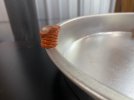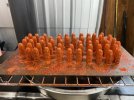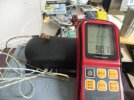CWLONGSHOT
Well-Known Member
I have had zero issues sizing my PC past .003 large. If I find it offers resistance Hormady one shot in a bag then mixed around solves that. (NOT a one shot fan but I keep as a release agent and PC bullet lube. Albeit only used on rare occasions) Then wash it off.
The coatings thickness or rather its possible uneven thickness is a non issue since my extra sifting maneuver. The coatings are quite uniform and thinner.
Thanks for the kudos. "Seeing" I find better for most then just reading. But now you have both!!
CW
The coatings thickness or rather its possible uneven thickness is a non issue since my extra sifting maneuver. The coatings are quite uniform and thinner.
Thanks for the kudos. "Seeing" I find better for most then just reading. But now you have both!!
CW






